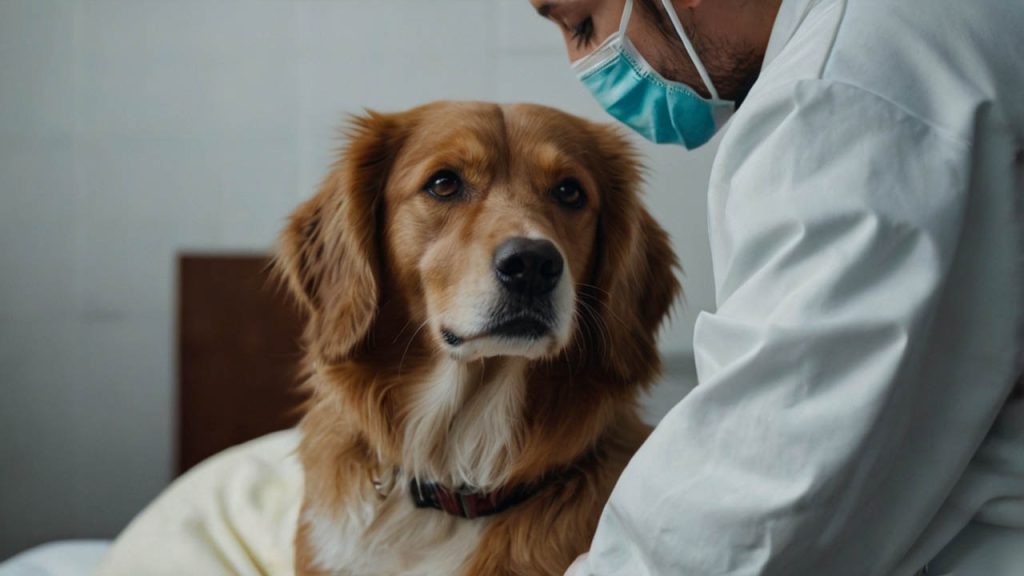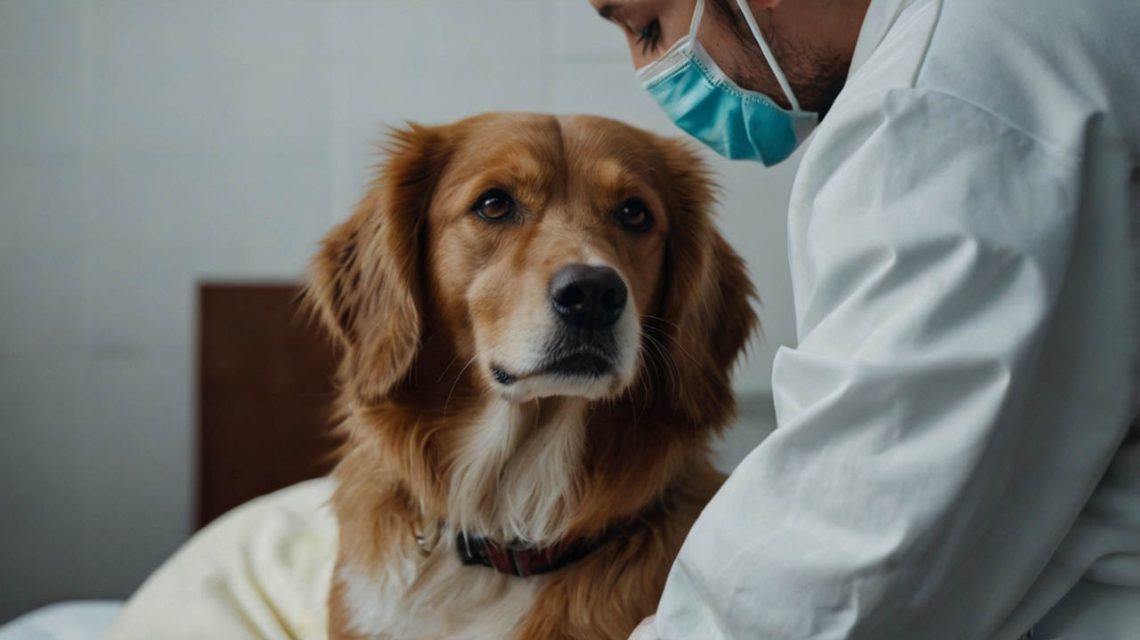The Ultimate Guide to Dog Inner Ear Infection Treatment
The story of an ear infection in a dog usually starts with simple scratching and head shaking, signs of a common outer ear infection. However, if that infection is left untreated or is particularly severe, it can begin a dangerous journey inward, past the eardrum, into the delicate structures of the middle and inner ear. When this happens, the story changes dramatically. It is no longer a simple issue of discomfort; it is a serious neurological event that requires an urgent and aggressive dog inner ear infection treatment plan.
This comprehensive guide will tell the complete, critical story of this serious medical condition, known as otitis interna. We will begin by explaining the alarming neurological symptoms that set an inner ear infection apart from a simple outer ear infection. Subsequently, we will explore how veterinarians diagnose this complex problem. Furthermore, we will detail the intensive dog inner ear infection treatment protocols that are often required, from long-term antibiotics to potential surgery. Consequently, you will be empowered with the knowledge to recognize the gravity of the symptoms and to seek the immediate veterinary care your dog’s life may depend on.
The Most Important First Step: Recognizing the Alarming Symptoms
Before we discuss treatment, it is absolutely crucial to understand that a dog inner ear infection is a veterinary emergency. The inner ear is not just responsible for hearing; it is home to the vestibular system, which controls your dog’s sense of balance and spatial orientation. When this system is inflamed, the symptoms are dramatic and neurological in nature.
The story of a successful outcome is a story of swift action. If you see any of the following signs, go to your veterinarian or an emergency clinic immediately:
- A Persistent Head Tilt: This is the most classic and recognizable sign. Your dog will hold their head tilted to one side, like they are trying to listen to something.
- Loss of Balance (Ataxia): Your dog may seem drunk and uncoordinated. They may stumble, wobble, drift to one side when walking, or be completely unable to stand.
- Circling: The dog may compulsively walk in tight circles, usually towards the side of the affected ear.
- Nystagmus: This is an abnormal, rapid, darting movement of the eyes, either from side to side or up and down.
- Vomiting and Nausea: The intense dizziness and loss of balance can cause severe motion sickness.
- Facial Paralysis: The facial nerve runs through the middle ear. Inflammation can cause it to become paralyzed, leading to a droopy eye, lip, and ear on the affected side.
These are not symptoms of a minor problem. They are urgent signs that require an immediate dog inner ear infection treatment plan.

How a Dog Inner Ear Infection is Diagnosed
The story of diagnosis is a story of careful, methodical investigation by your veterinarian. They must not only confirm the infection but also determine its extent and cause.
- Thorough Neurological and Otoscopic Exam: Your vet will assess your dog’s neurological signs and will use an otoscope to look deep into the ear canal. They will check to see if the eardrum (tympanic membrane) is ruptured, which is a common pathway for infection to travel from the outer to the middle and inner ear.
- Cytology and Culture: If there is discharge, a sample will be taken to identify the specific bacteria or yeast causing the infection. A culture and sensitivity test will tell the vet which specific antibiotic will be most effective.
- Advanced Imaging (CT Scan or MRI): This is often the most important diagnostic step. A CT scan or MRI is necessary to see the bony structures of the middle and inner ear, confirm the extent of the inflammation, and look for more serious underlying causes like a tumor or polyp.
The Core of the Cure: The Dog Inner Ear Infection Treatment Plan
The story of recovery from an inner ear infection is a long one, often taking many weeks to months. The treatment must be aggressive and multi-faceted.
Optimizing Your Understanding of Long-Term Antibiotics
This is the cornerstone of any dog inner ear infection treatment.
- The “Why”: Because the infection is deep within the bone-encased structures of the skull, it is very difficult for medications to penetrate the area.
- The Method: Your veterinarian will prescribe a long course of systemic (oral) antibiotics, often for 6-8 weeks or even longer. The choice of antibiotic will be based on the results of the culture and sensitivity test.
The Importance of Anti-inflammatory and Anti-Nausea Medications
- Steroids: Medications like prednisone are often used to reduce the severe inflammation within the inner ear and of the associated nerves. This can help to alleviate the neurological symptoms.
- Anti-Nausea Medication: Drugs like maropitant (Cerenia) are essential to control the vomiting and nausea caused by the intense dizziness, allowing the dog to eat and feel more comfortable.
The Role of Surgical Intervention in a Dog Inner Ear Infection Treatment Plan
In some severe or chronic cases, surgery may be necessary.
- Myringotomy: If the eardrum is intact but there is fluid trapped in the middle ear, the vet may make a small incision in the eardrum to flush out the debris and collect a sample for culture.
- Total Ear Canal Ablation (TECA): For dogs with chronic, end-stage outer and middle ear disease that has led to the inner ear infection, a TECA may be the only option. This is a major surgery that removes the entire ear canal.
The American College of Veterinary Surgeons (ACVS) provides detailed, authoritative information on this procedure.

The Final Chapter: A Story of Recovery and Prevention
The story of a dog inner ear infection treatment is a serious one that requires a deep commitment from the owner and a strong partnership with their veterinarian. The recovery can be slow, and some dogs may be left with a permanent head tilt, but most can return to a happy, high-quality life.
The happiest ending to this story is preventing it from ever happening. The vast majority of inner ear infections are a direct result of an untreated chronic outer ear infection. By working with your vet to manage your dog’s allergies and to treat any outer ear infections promptly and completely, you can prevent this dangerous inward journey.
Have you ever had a dog with vestibular symptoms? Share your experience in the comments below. For more on routine care, be sure to read our guide on [How to Clean a Dog’s Ears Home Remedy That’s Safe and Effective].


